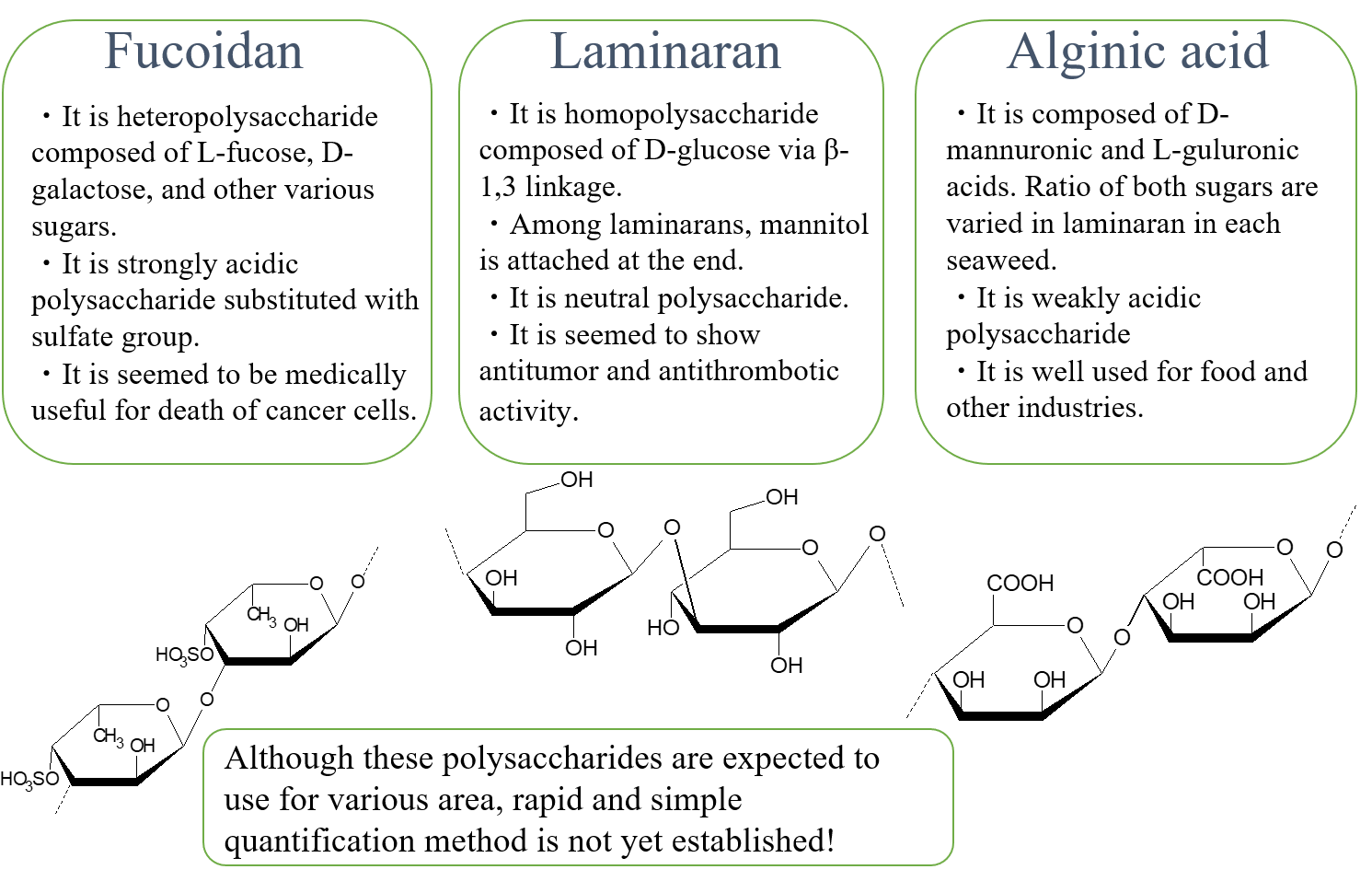
Introduction
Among
seaweeds, brown algae, including Kombu
(sea
tangle)
and Wakame (sea
mustard),
contain laminaran, fucoidan, and alginic acid as polysaccharides. These polysaccharides
have already been reported for various functions and are known as
health-benefitial
effects
for humans. However, while it says, "How much of these polysaccharides
are in seaweed?" there is no easy way to
determine how much they are in the seaweed.
This is partly due to the complex structure of fucoidan,
which shows chemical variety
of fucoidan
depending on the type of seaweed.
For
this purpose, we are developing a new method to easily measure the amount of
laminaran, fucoidan, and alginic acid extracted from seaweeds. This method aims
to establish a measurement method that can be used anywhere by using
inexpensive measurement devices.
Method
Since
it is difficult to extract laminaran, fucoidan, and alginic acid separately from brown algae, we have studied a
simple method to separate polysaccharides from seaweeds after extracting
polysaccharide mixtures from seaweeds. Subsequently, we are developing a simple
method for measuring the amount of polysaccharides in each
polysaccharide fractions.
Result
We have established a simple method for separation of polysaccharides by ion exchange. Research is
currently underway to establish a method for easily measuring polysaccharides in separate segments.
Since
we are not researching functions of polysaccharides, we are aiming to establish important analytical methods
before use of their functions